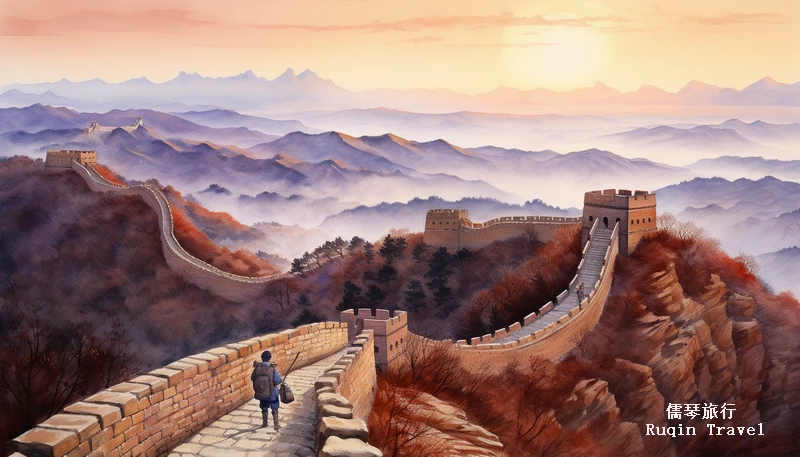Plan your Great Wall Tour near Beijing? The Great Wall of China near Beijing is not just a singular monolithic structure; it’s an amalgamation of various sections, each with its own unique charm and challenges.
These sections cater to a wide range of tourists, from leisurely visitors to avid hikers. In this guide, we delve into the top sections of the Great Wall, providing valuable insights to help you choose the perfect spot for your adventure.
Simatai Great Wall
The Simatai section, located northeast of Miyun County and about 140 kilometers from Beijing’s city center, is a testament to the Wall’s original Ming Dynasty architecture. The Great Wall here is divided by the Simatai Reservoir, with a dramatic chain bridge connecting the two halves. This 5 km stretch features 28 watchtowers, with the eastern section known for its steep, mountainous terrain.

Simatai’s unique characteristics lie in its minimal restoration, presenting an authentic view of the Wall’s ancient structure. The eastern part, with its high peaks and rugged paths, offers breathtaking views and a thrilling challenge for hikers. While the western section is under protection, not accessible, most visitors have to climb the western stretch for its picturesque and daring nature. At the 12th tower, hikers must turn back or opt for a cable car descent, as the route beyond is closed for safety reasons.
The journey to Simatai is a blend of leisure and adventure. Though the hike is challenging, the awe-inspiring views and the sense of traversing through history make it a rewarding experience.
Jinshanling Great Wall
For experienced travelers seeking a blend of authenticity and adventure, the Jinshanling Great Wall is an exemplary choice. Straddling the border between Miyun County in Beijing and Luanping County in Chengde, it lies about 130 km northeast of Beijing’s city center. This section is particularly notable for its half-restored, half-original state, offering stunning landscapes and a tangible sense of history.
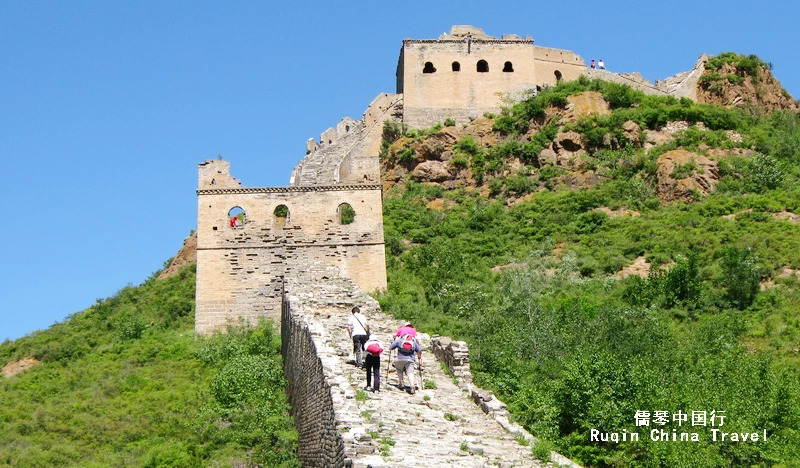
Getting to Jinshanling can be an adventure in itself. The journey involves a bus (No. 980 Express) to Miyun County, followed by a mini-bus ride to the Wall, costing around RMB 65 in total. The relative complexity of reaching Jinshanling means fewer crowds, making for a more serene hiking experience.
Gubeikou Great Wall
Located in Miyun County, about 140 kilometers from downtown Beijing, the Gubeikou Great Wall presents an authentic, less-trodden path for experienced hikers. This section comprises two distinct parts: the Panlongshan (Coiled Dragon Mountain) and Wohushan (Crouching Tiger Mountain) Great Walls. The strategic positioning of these mountains, with a valley in between, played a crucial role in ancient military history.
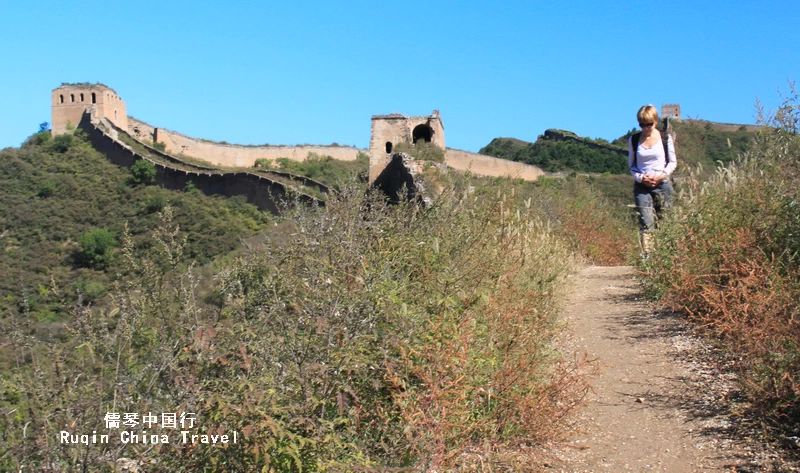
The Gubeikou section remains mostly unrestored, offering a raw and genuine experience of the Wall. The Panlongshan section is partially accessible, while Wohushan remains closed to the public, preserving its wild nature. Hikers at Gubeikou are treated to the sight of two parallel walls from different eras – the Northern Qi Dynasty (550-557) and the early Ming Dynasty (1368-1644). The accessible part of Panlongshan culminates in a 24-window tower, marking the end of the hikeable area.
For an extended adventure, you can hike from Gubeikou to Jinshanling, covering about 10 km in approximately 5 hours. The route involves bypassing a restricted military zone, descending into a valley before continuing towards Jinshanling. This trail offers a compelling mix of historical intrigue and natural beauty.
Mutianyu Great Wall
The Mutianyu section, approximately 80 kilometers north of Beijing in Huairou District, is a favorite among both tourists and locals. Known for its breathtaking natural beauty, this part of the Great Wall is surrounded by lush forests, making it particularly stunning in autumn when the leaves change color. Mutianyu’s 23 watchtowers span about 3000 meters along the ridge, offering varied perspectives of the surrounding landscape.
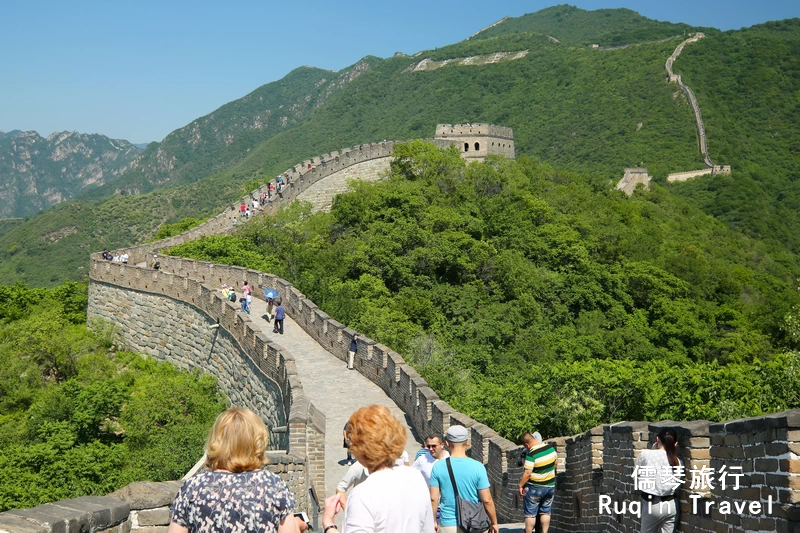
What sets Mutianyu apart is its relative smoothness and accessibility, making it ideal for leisure travelers. The section has been well restored, featuring pathways and guardrails, ensuring a safer experience. For those seeking a bit more adventure, hiking westward connects you to the rugged Jiankou Great Wall, offering a stark contrast between the restored and wild parts of the Wall.
Mutianyu also provides various amenities, including a cable car and toboggan ride, adding a fun and unique way to experience the Great Wall. Whether you’re seeking a challenging hike or a leisurely stroll with stunning views, Mutianyu caters to all.
Jiankou Great Wall
For the adventurous soul and experienced hiker, the Jiankou Great Wall is an irresistible draw. Located in Huairou District, this section is known for its steep, rugged terrain and is considered one of the most challenging and wild parts of the Great Wall near Beijing. The section’s name, “Jiankou,” translates to “Arrow Nock,” aptly describing the V-shape formed by the mountains here.
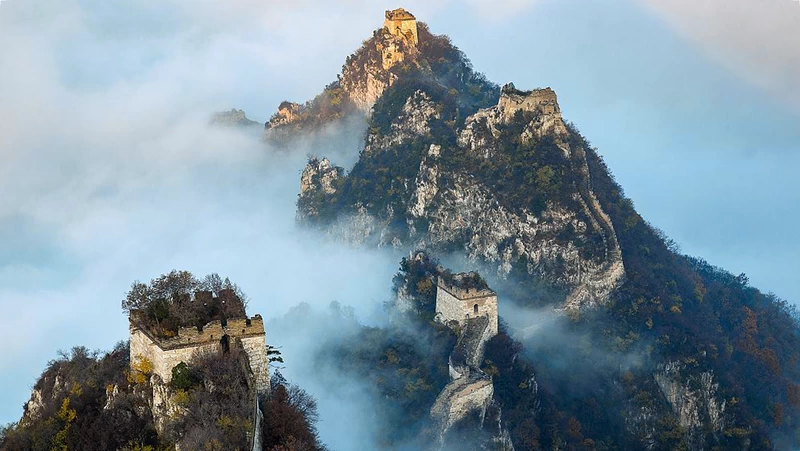
Jiankou is famous for its precipitous landscapes and distinctive features like the “Eagle Flies Facing Upward” tower, the vertiginous “Sky Ladder,” and the “Beijing Knot” where multiple sections of the Wall converge. These elements combine to make Jiankou a breathtakingly photogenic and thrilling hiking destination.
However, its ruggedness also means that Jiankou is not for the faint-hearted. The hike involves navigating uneven steps and steep inclines, often without guardrails. It’s essential to be well-prepared with appropriate gear, plenty of water, and a well-thought-out plan. Although challenging, the journey from the Zhengbeilou Watchtower to the restored Mutianyu section offers stunning views and a sense of unparalleled achievement.
Huanghuacheng Great Wall
Huanghuacheng, approximately 60 kilometers north of Beijing, presents a unique experience. This section, named “Yellow Flower City,” is notable for its blend of majestic mountains and water. The Great Wall here is partially submerged in a lake, creating a scene of stunning beauty, especially during the summer when the yellow flowers bloom, giving the area its name.
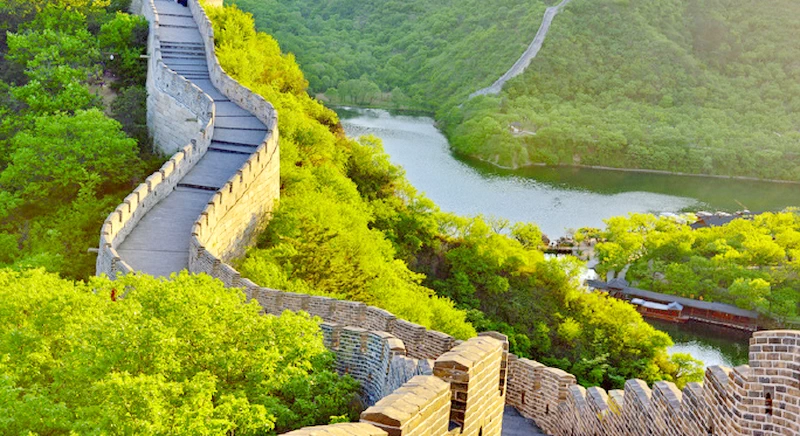
This section offers a moderately challenging hike, as some parts of the Wall are steep and unrestored. The lack of restoration means fewer tourists and a more authentic experience, but it also requires careful navigation. Huanghuacheng’s length and terrain vary, providing options for both short walks and longer, more demanding hikes. This diversity makes it an excellent choice for experienced hikers looking for something a little different.
Badaling Great Wall
Badaling, the most famous and well-preserved section of the Great Wall, is located about 80 kilometers northwest of Beijing. Its popularity stems from its accessibility and the historical significance of having hosted numerous world leaders. Badaling offers a more comfortable experience with well-maintained paths and facilities, making it suitable for leisure travelers and those with limited mobility.
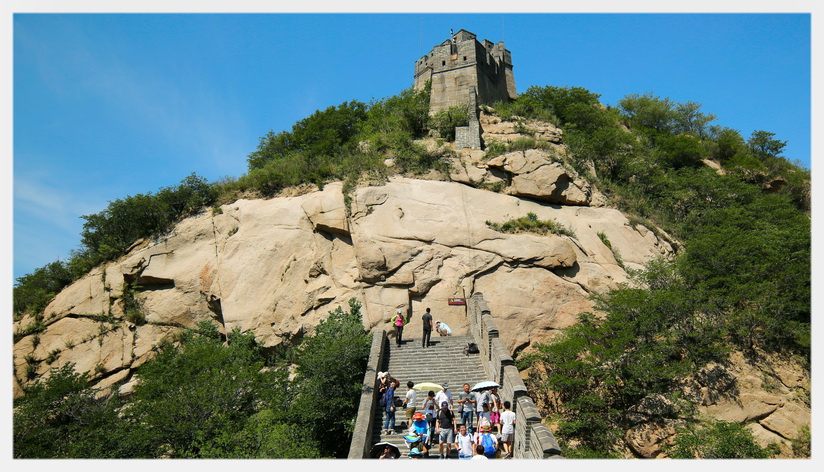
This section of the Wall is wide, averaging 8 meters in height, and includes several watchtowers that served as military lookouts in ancient times. The Wall here showcases impressive architectural feats, with its high walls and deep trenches. Despite its popularity and the potential for crowds, the panoramic views and historical significance of Badaling make it a must-visit.
Juyongguan Great Wall
The Juyongguan section, located in a valley surrounded by mountains, is rich in history and natural beauty. This part of the Wall is significant as it served as a critical pass near Beijing, protecting the ancient capital from invasions. The present structure dates back to the Ming Dynasty and is a fine example of Great Wall architecture.
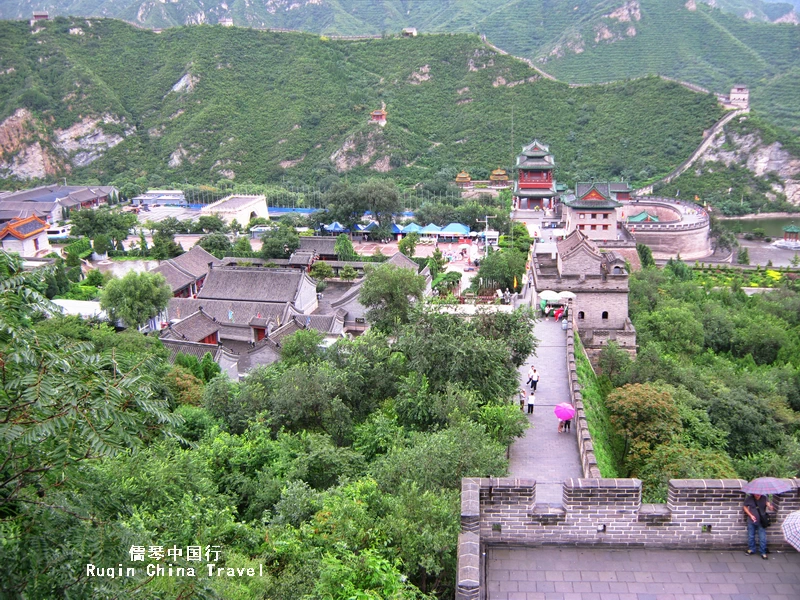
Juyongguan is divided into eastern and western semicircles, each offering a unique hiking experience. The western part is steeper and more challenging, while the eastern is somewhat more accessible. Both sides provide stunning views of the valley and surrounding mountains. This section is less crowded than Badaling, making it a good option for those who prefer a quieter experience without sacrificing scenic beauty.
The Great Wall near Beijing offers diverse experiences, from the rugged and challenging Jiankou to the more accessible and tourist-friendly Mutianyu and Badaling. Each section has its unique characteristics, catering to various interests and fitness levels. We encourage visitors to explore these magnificent sections, respecting their historical significance and natural beauty. Whichever section you choose, the Great Wall promises an unforgettable experience, steeped in history and breathtaking views.

